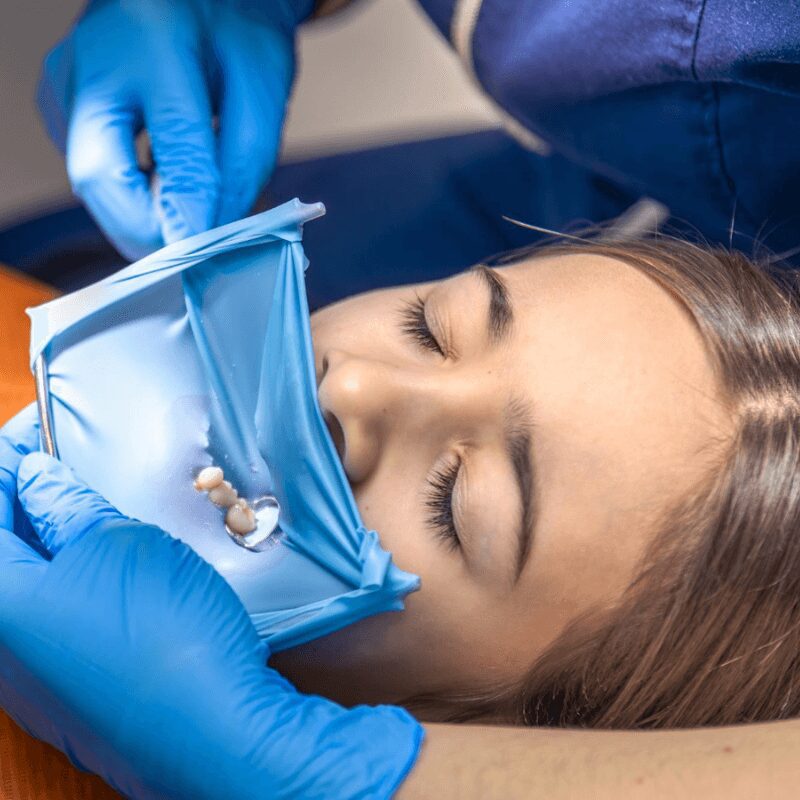That nagging ache in the back of your jaw might be more than just stress or sleeping wrong—it could be your wisdom teeth making their grand entrance. For most young adults, the emergence of these final molars marks a significant milestone, but it’s not always a comfortable one.
Understanding the first signs of wisdom teeth eruption can help you distinguish between normal wisdom tooth eruption pain and symptoms that require immediate dental attention. Whether you’re in your late teens or early twenties, recognizing these early indicators allows you to take proactive steps for your oral health and avoid potential complications down the road.
In this comprehensive guide, we’ll explore the five key symptoms that signal your wisdom teeth are on their way, explain why these third molars often cause problems, and provide practical advice on when to seek professional dental care.
What Are Wisdom Teeth?
Wisdom tooth, scientifically called the third molar, represent the final set of permanent teeth to develop in your mouth. These adult teeth are positioned at the extreme back of both your upper and lower dental arches, making them the last molars to erupt.
The process of wisdom teeth coming typically occurs during late adolescence or early adulthood, most commonly between ages 17 and 25. However, not everyone develops four wisdom teeth—some people may have fewer, while others may be missing them entirely due to evolutionary changes in human jaw structure.
From an evolutionary perspective, these molars once served an important purpose. Early humans relied on wisdom teeth to grind tough, uncooked plant material and meat. The extra grinding surface these teeth provided was essential for processing fibrous foods that made up much of the ancestral diet.
As human diets became softer and cooking techniques advanced, the need for these powerful grinding teeth diminished. Simultaneously, human jaws gradually became smaller through evolutionary processes, creating the space issues we commonly see today when wisdom teeth grow and attempt to erupt.
5 Key Signs Your Wisdom Teeth Are Coming In
Recognizing the symptoms of wisdom tooth eruption early can help you prepare for what’s ahead and determine whether professional intervention is needed. Here are the five most reliable indicators that your wisdom teeth are making their appearance:
1. Jaw Pain and Pressure
The most frequently reported symptom as wisdom teeth begin to emerge is a persistent dull ache or throbbing sensation at the back of your mouth. This tooth pain typically develops gradually and may initially be intermittent, occurring in waves rather than constantly.

As your wisdom tooth pushes through the surrounding bone and gum tissue, it creates pressure against existing teeth and jaw structures. This pressure often radiates beyond the immediate area, causing discomfort that can extend to your ear, temple, or even cause frequent headaches.
Impacted wisdom teeth—those that become stuck beneath the gum line or against other teeth—tend to create more intense pressure and prolonged discomfort. The pain may worsen when you chew, open your mouth wide, or apply pressure to the back of your jaw.
2. Tender, Swollen, or Bleeding Gums
When wisdom teeth erupt, the surrounding gum tissue often becomes inflamed, creating tender or bleeding gums in the affected area. You might notice red, swollen gums at the very back of your mouth, particularly around where the new tooth is attempting to break through.
Bleeding may occur during brushing, flossing, or even while eating. This happens because the emerging tooth creates small tears in the gum tissue as it pushes through. In many cases, wisdom teeth only partially erupt, leaving a flap of gum tissue covering part of the tooth—a condition that creates an ideal environment for bacteria to accumulate.
This bacterial buildup can lead to a localized infection called pericoronitis, which causes additional swelling, pain, and sometimes a bad smell or unpleasant taste in your mouth. The infection risk is particularly high because these areas are difficult to clean effectively with regular brushing and flossing.
3. Difficulty Opening Your Mouth or Jaw Stiffness
Many people experience restricted jaw movement when their wisdom teeth are coming in. This limitation, known medically as trismus, can make it challenging to open your mouth fully, chew food comfortably, or even speak normally.
The stiffness typically results from inflammation in the muscles and tissues surrounding the erupting tooth. As your body responds to the emerging wisdom tooth, the inflammatory process can affect nearby muscles, causing them to become tight and less flexible.
You might notice this restriction is worse in the morning or after periods of inactivity. The sensation can range from mild stiffness to significant limitation that interferes with eating or oral hygiene routines.
4. Bad Breath or Unpleasant Taste
An emerging wisdom tooth often creates small pockets or crevices that are nearly impossible to clean thoroughly. Food particles and bacteria readily accumulate in these spaces, leading to persistent bad breath or a lingering foul taste that doesn’t improve with regular brushing or mouthwash.
This symptom is particularly common with partially erupted wisdom teeth, where a portion of the tooth crown is visible but the rest remains covered by gum tissue. The covered areas become natural collection points for debris, creating an environment where harmful bacteria thrive.
If you notice persistent bad breath or an unusual taste that seems concentrated in the back of your mouth, it could indicate that bacteria are accumulating around an erupting wisdom tooth. This situation requires careful attention to oral hygiene and potentially professional cleaning.
5. Crowding or Shifting of Existing Teeth
As wisdom teeth grow and push through the gums, they can exert pressure on neighboring second molars and other teeth. This pressure sometimes causes existing teeth to shift slightly, potentially creating changes in your bite or the alignment of your teeth.
The impact on other teeth varies significantly between individuals. Some people notice minor changes that don’t affect function, while others experience more noticeable shifting that can compromise previous orthodontic work or create new alignment issues.
This crowding effect is particularly concerning for people who have had braces or other orthodontic treatment, as the pressure from emerging wisdom teeth can potentially undo some of the alignment corrections that were previously achieved.
When Do Wisdom Teeth Typically Emerge?
While the average age range for wisdom tooth eruption falls between 17 and 25 years, the timing varies considerably among individuals. Some people begin experiencing symptoms in their early twenties, while others may not see their wisdom teeth erupt until their late twenties or beyond.
Several factors influence when wisdom teeth come in, including genetics, jaw size, and the angle at which the teeth are positioned. Dental X-rays can detect developing wisdom teeth as early as ages 10-12, allowing dentists to monitor their progress and anticipate potential issues long before symptoms appear.
It’s important to note that not everyone will experience all four wisdom teeth erupting. Some people naturally develop fewer than four, while others may have wisdom teeth that never fully emerge from the gum line. This variation is completely normal and reflects the ongoing evolutionary changes in human dental development.
Why Wisdom Teeth Cause Problems
The primary reason wisdom teeth often lead to dental problems relates to the evolution of human jaw size. Modern jaws are typically smaller than those of our ancestors, frequently lacking enough room to accommodate these additional molars comfortably.
When there isn’t enough space for proper eruption, wisdom teeth may become impacted—stuck beneath the gum tissue or positioned at odd angles against adjacent teeth. Impacted teeth can remain completely hidden beneath the gums or only partially emerge, creating numerous potential complications.
Partially erupted wisdom teeth are particularly problematic because they create areas that are nearly impossible to clean effectively. The spaces around these teeth become breeding grounds for bacteria, significantly increasing the risk of gum disease, tooth decay, and infections that can affect overall oral health.
Additionally, impacted wisdom teeth can form cysts or damage the roots of neighboring second molars. In some cases, the pressure from impacted teeth can contribute to dental complications that extend beyond the immediate area of the wisdom tooth itself.
How Long Does Wisdom Teeth Pain Last?
The duration of wisdom teeth pain varies dramatically from person to person. Some individuals experience discomfort for only a few days or weeks, while others may have symptoms that persist for several months, particularly if the eruption process is complicated by impaction or infection.
Several factors influence both the intensity and duration of symptoms:
- Eruption angle: Teeth emerging straight up typically cause less prolonged discomfort than those erupting at odd angles
- Available space: Adequate jaw space generally leads to shorter periods of discomfort
- Oral hygiene: Maintaining excellent oral hygiene around erupting teeth can minimize complications and reduce symptom duration
- Individual pain tolerance: Some people are naturally more sensitive to the pressure and inflammation associated with tooth eruption

Pain that persists beyond a few weeks, intensifies over time, or is accompanied by fever, severe swelling, or difficulty swallowing indicates the need for prompt dental evaluation. These symptoms may signal complications that require appropriate treatment beyond simple pain management.
When to See a Dentist
While some discomfort during wisdom tooth eruption is normal, certain symptoms warrant immediate professional attention. Contact your dentist or oral and maxillofacial surgeons if you experience:
| Immediate Attention Required | Routine Evaluation Recommended |
|---|---|
| Fever or chills | Persistent mild to moderate pain |
| Severe facial swelling | Gradual tooth crowding |
| Difficulty swallowing or breathing | Ongoing bad breath despite good hygiene |
| Persistent bad taste resistant to cleaning | Minor gum irritation |
| Severe, worsening pain | Questions about eruption progress |
Regular dental check-ups during your late teens and early twenties are essential for monitoring wisdom tooth development. Many dentists recommend proactive evaluation and planning rather than waiting for problems to develop, as early intervention often prevents more complex issues.
During routine examinations, dentists can assess whether your emerging wisdom teeth have enough space to erupt properly or if they’re likely to become impacted. This assessment often involves X-rays that reveal the position and angle of developing teeth before they become symptomatic.
Home Care and Pain Relief
While professional dental care is essential for addressing serious complications, several home remedies can provide temporary relief from wisdom teeth pain and help maintain oral hygiene during the eruption process:
Pain Management Options:
- Over-the-counter pain relievers like ibuprofen or acetaminophen, following package directions
- Cold compresses applied to the outside of the jaw for 15-20 minutes at a time
- Gentle saltwater rinses (1/2 teaspoon salt in warm water) to reduce bacteria and soothe irritated tissues
Oral Hygiene Strategies:
- Careful brushing around erupting teeth, using a soft-bristled toothbrush
- Gentle flossing to remove food particles, being extra cautious near tender areas
- Antimicrobial mouthwash to help control bacteria in hard-to-reach spaces
- Avoiding hard, sticky, or crunchy foods that might irritate sensitive gum tissue
Important Limitations:
Home remedies should never replace professional dental care when symptoms are severe, persistent, or worsening. If pain interferes with sleep, eating, or daily activities, or if you develop signs of infection, professional evaluation is necessary to prevent further complications.
Additionally, avoid using aspirin directly on gum tissue, as this can cause chemical burns. Similarly, avoid extremely hot or cold foods and beverages that might increase sensitivity in the affected area.
Conclusion
Recognizing the first signs of wisdom teeth coming in empowers you to take proactive steps for your oral health and seek appropriate treatment when necessary. The five key symptoms—jaw pain and pressure, tender or bleeding gums, difficulty opening your mouth, bad breath or unpleasant taste, and crowding of existing teeth—serve as reliable indicators that your third molars are making their appearance.
While some discomfort during wisdom tooth eruption is normal, persistent or severe symptoms warrant professional evaluation. Early detection and appropriate treatment can prevent minor issues from developing into serious dental complications that may require more extensive intervention.

Remember that not everyone needs to have their wisdom teeth removed, but many dentists recommend proactive assessment during the typical eruption years. Regular dental visits allow for monitoring of wisdom tooth development and early identification of potential problems before they become painful or complicated.
If you’re experiencing any combination of these symptoms, particularly if they’re interfering with your daily activities or oral hygiene routine, schedule a consultation with Advanced Dental Care of Indiana. Professional evaluation can determine whether your wisdom teeth need to be removed or if conservative management strategies are sufficient to maintain your oral health as these final molars complete their journey into your mouth.

